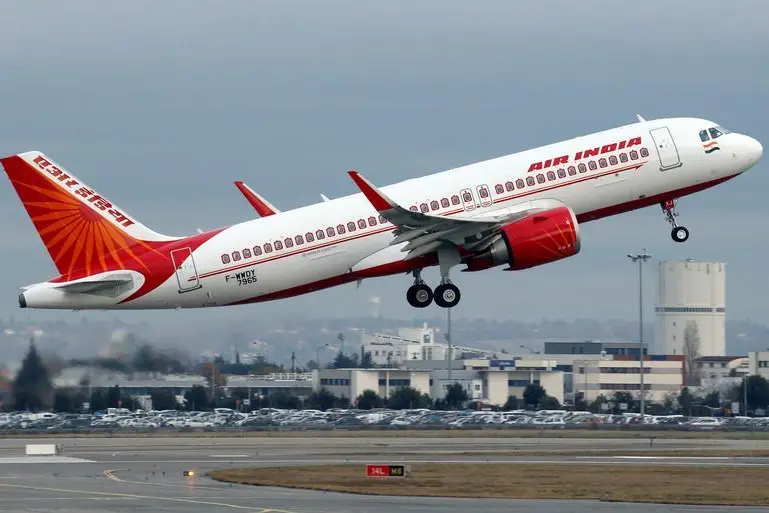PHOTO
MUMBAI - Air India’s turnaround could use a dash of seasoning. Prospective owners of the soon-to-be privatised airline could learn a thing from SpiceJet co-founder Ajay Singh, who returned three years ago to take the helm of the low-cost carrier and has brought it back from the brink of closure. Likely bidders for the national carrier, which include its original owner Tata and InterGlobe Aviation, the parent of IndiGo, will want to plot a similar firm flight path. SpiceJet was out of cash for operations when Singh took control for a nominal 2 rupees in 2015. The carrier has turned a profit in each of the 12 consecutive quarters since. Net profit rose 32 percent to a record 2.4 billion rupees ($37.3 million) for the quarter to end-December, SpiceJet reported Wednesday. Its market cap is now $1.2 billion. A stated ambition to start low-cost long-haul operations within two years further confirms SpiceJet’s rude health.
The grounding of Vijay Mallya’s Kingfisher Airlines in 2012 caused many to question the future of Indian aviation. Air India’s continuous accrual of debt, now at more than $8 billion, hasn’t inspired confidence either. But the revival of SpiceJet, which has around 14 percent share of the domestic market, goes a long way to restoring confidence.
Of course, Air India does have a fleet several times larger than SpiceJet, and it operates a more complex business model, flying long-haul routes using multiple types of aircraft. It is also unlikely to benefit from the falling oil prices that helped Singh’s turnaround considerably.
Even so, the national carrier can significantly improve its performance by getting more of its aircraft to fly on time and at peak-demand hours. SpiceJet’s punctuality at four major metro airports improved from 64 percent to 78 percent under Singh’s lead. Air India is on schedule barely 70 percent of the time. Improving timeliness would help Air India to put more bums on seats. The domestic passenger “load factor” at SpiceJet is consistently above 90 percent even without heavily discounted fares. By contrast, Air India’s scheduling reflects political considerations.
SpiceJet’s turnaround has clearly enriched its owners: shares have risen over 580 percent in three years. Air India can find the same runway.
CONTEXT NEWS
- India’s SpiceJet on Feb. 7 reported a 32 percent rise in net profit, to 2.39 billion rupees ($37.3 million) for the quarter ended Dec. 31.
- Passenger yield, a measure of average fare and distance flown, increased 14 percent. Domestic passenger load factor, which measures how much of an airline's passenger carrying capacity is used, was 95 percent.
- SpiceJet shares have risen 114 percent over the past year.
(Editing by Pete Sweeney, Sharon Lam and Bob Cervi)
© Reuters News 2018
The grounding of Vijay Mallya’s Kingfisher Airlines in 2012 caused many to question the future of Indian aviation. Air India’s continuous accrual of debt, now at more than $8 billion, hasn’t inspired confidence either. But the revival of SpiceJet, which has around 14 percent share of the domestic market, goes a long way to restoring confidence.
Of course, Air India does have a fleet several times larger than SpiceJet, and it operates a more complex business model, flying long-haul routes using multiple types of aircraft. It is also unlikely to benefit from the falling oil prices that helped Singh’s turnaround considerably.
Even so, the national carrier can significantly improve its performance by getting more of its aircraft to fly on time and at peak-demand hours. SpiceJet’s punctuality at four major metro airports improved from 64 percent to 78 percent under Singh’s lead. Air India is on schedule barely 70 percent of the time. Improving timeliness would help Air India to put more bums on seats. The domestic passenger “load factor” at SpiceJet is consistently above 90 percent even without heavily discounted fares. By contrast, Air India’s scheduling reflects political considerations.
SpiceJet’s turnaround has clearly enriched its owners: shares have risen over 580 percent in three years. Air India can find the same runway.
CONTEXT NEWS
- India’s SpiceJet on Feb. 7 reported a 32 percent rise in net profit, to 2.39 billion rupees ($37.3 million) for the quarter ended Dec. 31.
- Passenger yield, a measure of average fare and distance flown, increased 14 percent. Domestic passenger load factor, which measures how much of an airline's passenger carrying capacity is used, was 95 percent.
- SpiceJet shares have risen 114 percent over the past year.
(Editing by Pete Sweeney, Sharon Lam and Bob Cervi)
© Reuters News 2018












